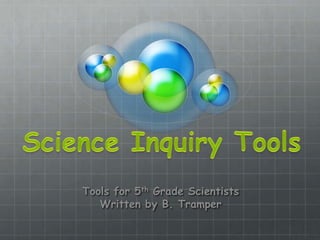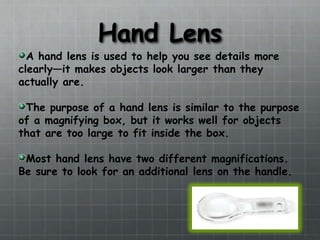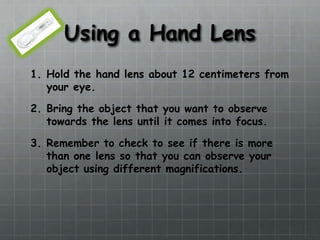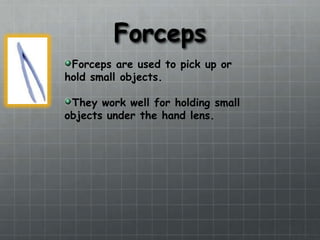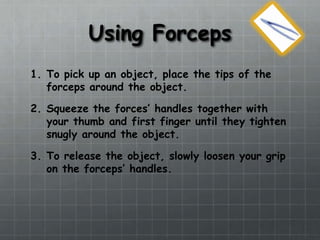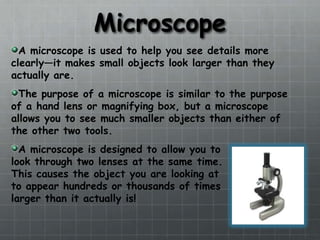A thermometer measures temperature, a dropper moves small amounts of liquid, and a tape measure measures curved surfaces. Other tools described include a spring scale, ruler, measuring cup, magnifying box, hand lens, forceps, balance, and microscope. The document provides details on how to properly use each tool and emphasizes the importance of safety in the science lab.
